We were saddened this week to hear of the death of Robert Otis Buck.
The name may not be familiar to you, but the face should be. Norman Rockwell chose it for his Willie Gillis series, which portrayed events from the life of a young American GI.
Willie first appeared on the cover of the Post on October 4, 1941. When he next appeared, a year later, the editors ran this short item:
There have been so many questions about the first Willie Gillis cover by Norman Rockwell that we’re glad to supply a few answers. No, Willie is not a soldier. He works in a sawmill near Mr. Rockwell’s Vermont home.
And that was all they said about Mr. Buck.
Over the next two years, Willie Gillis had adorned the Post cover eight times and had become a celebrity. Like Rosie the Riveter and the Americans shown in the Four Freedoms, he had become a symbol of the American war effort. He had become so popular, the Post finally divulged the model’s identity.
Willie in real life is Robert Otis Buck, known to his friends as “Little Buck.” Norman Rockwell, seeking a model for his Willie Gillis Post covers, spotted Little Buck in the summer of 1941 at a square dance at Arlington, Vermont, where the Rockwells live.
“Norman stared at the boy so long,” Mrs. Rockwell said afterward, “that Buck was ready to take a poke at him until Norman finally explained that he wanted him for a model.”
The following June Little Buck was graduated from Salem Washington Academy, Salem, New York, and went to work for General Electric at Pittsfield, Mass. Mr. Rockwell made a number of sketches of Little Buck for future Willie Gillis covers.
Rockwell liked Buck’s looks. He wasn’t glamorous. He didn’t exude bravery and nobility. To Rockwell, the character of Willie Gillis was “an inoffensive, ordinary little guy thrown into the chaos of war.” He would look decent and unsophisticated, but ready to adapt to life in the Army.
Rockwell also liked the fact that Buck had a medical deferment, which kept him out of the draft, so his model would be available for posing throughout the war. But by 1943, Robert Buck was tired of sitting out the war.
The trouble with the country and the world, too, is that nothing stays put. Not even Pvt. Willie Gillis.
We hope your illusions are good sturdy fellows, able to take it on the chin when we report, as we feel bound to do, that Gillis is leading a double life—has been since May, when he joined the Navy.
On May fourteenth, Buck entered the Navy as apprentice seaman at the Naval Training Station at Sampson, New York. The following day the Rockwell studio at Arlington burned and all [of Rockwell’s sketches of Buck] were destroyed. The Navy, with the generous realization that life must go on for Pvt. Willie Gillis, lent him back to Mr. Rockwell long enough for the artist to make new sketches.
Little Buck, who, the Rockwells agree, is a swell youngster, hopes to become a Naval flying cadet at the end of eight months’ training.
He himself sees no impropriety in his up and joining the Navy after becoming, as Willie Gillis in Army togs, America’s No. 1 pin-up boy. As for his reason, it was simple. ” I just liked the Navy better,” he said.
Well, it’s Willie Gillis’, excuse us—Little Buck’s, young life to lead and to offer to whatever branch of the service he prefers. We’ve always rooted for the Annapolis football team ourselves. But all the same, Willie’s turning up in the Navy does underline the instability these days of all so-called established things.
In all, Buck/Gillis appeared on 11 Post covers. The last one showed him as a young man, discharged from the Army, studying at college. The American soldier was now the American scholar, one of 7.8 million Americans taking advantage of the G.I. Bill.
It was as happy an ending as Rockwell could have painted for the war. He gave the original painting to Buck, who never parted with it.
Norman Rockwell
November 29, 1941
Norman Rockwell
January 1, 1944
Norman Rockwell
September 16, 1944
Norman Rockwell
Jun 27, 1942
Norman Rockwell
February 7 , 1942
Norman Rockwell
October 5 ,1946
Norman Rockwell
September 5, 1942
Norman Rockwell
June 26, 1943
Norman Rockwell
October 4, 1941
Norman Rockwell
April 11, 1942
Norman Rockwell
July 25, 1942
Become a Saturday Evening Post member and enjoy unlimited access. Subscribe now
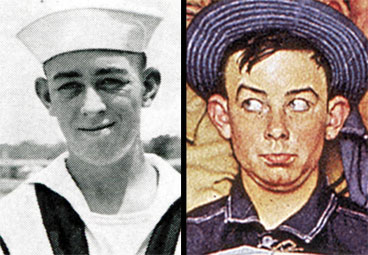

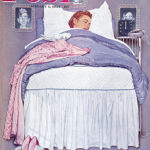
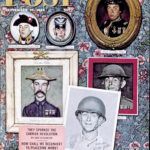
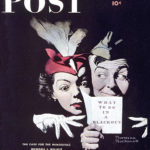
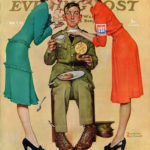
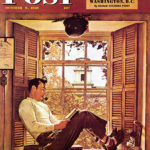
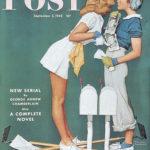
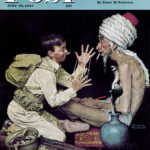
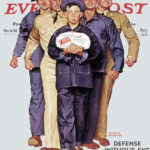
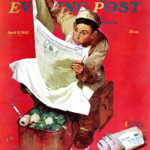
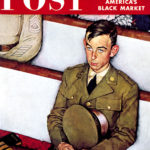

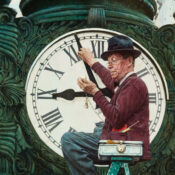
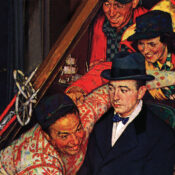
Comments
Robert was our next door neighbor in Kings Gate, Port Charlotte, Fl for over 5 years. He was so proud of his history as Willie Gillis and displayed copies of all the Evening Post covers on his dining room wall. A good neighbor and a good man. God speed, Mr. Buck!
Now we all know for sure that the “Buck” does not stop hear but is now in a much better place which is of much Greater Value.
His Shalom, Noel
…one of the rare specimens of God’s creation…He was a super-friendly, polite gentleman golfer who always insisted that his name was ‘Robert,’- not Bob or Bobby or any other derivative. Kingsgate will be the lesser in his absence, much like the ‘clod that washed away from the continent.’ May God show him a short path to heaven.
Sure going to miss this man, he was my golfing buddy here in Florida over the last several years.
Robert shared many stories with me about his days with Norman Rockwell. As an artist, I was going to do a painting of Robert looking up to view a print of himself in his younger days as Willie Gillis Jr ( a name made up by Mrs. Rockwell). The painting would be a comparison of his youth (in the painting “package from home”) to his current age of 86 (april 16th) .Robert always wore a hat similiar to the one in the painting whenever he would golf, which was often. I was fortunate to have Robert sign the prints of the paintings he was in as Willie Gillis Jr.
God Bless you Robert, rest in peace.
What a “GREAT GUY” I shared many good times with Robert, on the golf course and on the “nineteenth hole”.
He shared with me his times with Norman Rockwell, and as an artist myself I really enjoyed his stories. I am fortunate to have prints signed by Robert.
He was a very benevolent person in many ways. God bless him.
Willie Gillis of World War II,
Portrayed by Norman Rockwell as
American GI, true blue,
One of all America has,
For freedom, fighting the good fight,
Then coming home safe to fulfill
A future, promising and bright,
To college on the GI bill.
In wars today, no Willie’s shown,
The sight and sound bytes give no face.
Coverage keeps a high tech tone
To keep up with war’s modern pace.
Yet, the American GI
Fights for freedom for you and I.